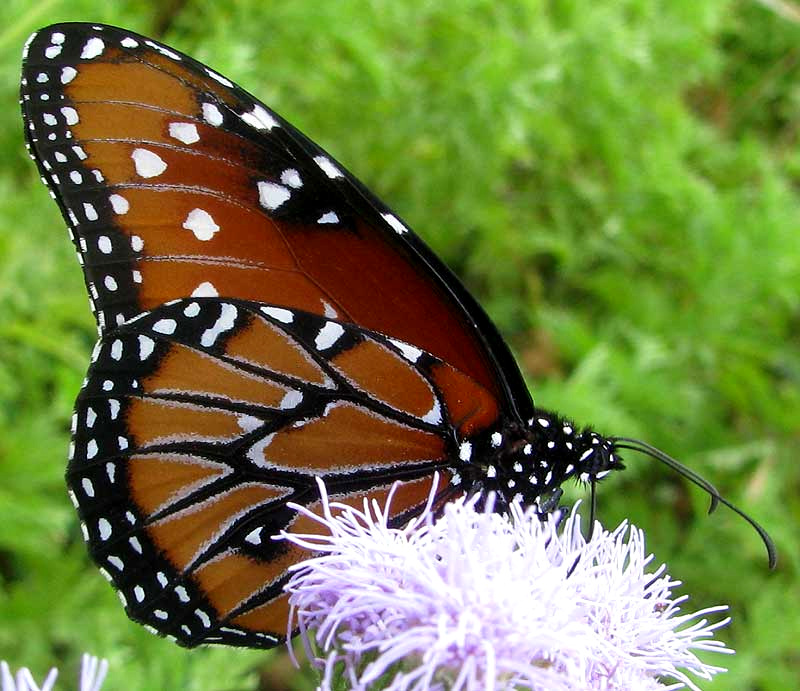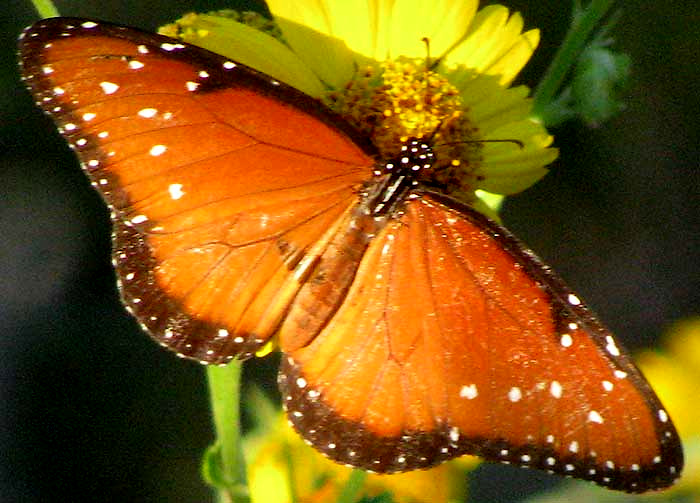Excerpts from Jim Conrad's
Naturalist Newsletter

from the October 28, 2012 Newsletter issued from the valley of the Dry Frio River in northern Uvalde County, southwestern Texas, on the southern border of the Edwards Plateau; elevation ~1750m (~5750 ft); N29.62°, W99.86°; USA
QUEEN BUTTERFLIES
Last week migrating Monarch butterflies reached their peak in numbers as they passed through our part of southwestern Texas, heading for highland central Mexico. We described that passage at http://www.backyardnature.net/n/a/monarch.htm.
Something not mentioned then was that often among the gatherings of Monarchs at wildflower spots there were other darker butterflies who were very similar to Monarchs when viewed from the side but looked completely different from Monarchs when viewed from above. You can see this yourself. First, compare the side view of our dark butterfly shown at the top of this page with a similar side view of a Monarch at http://www.backyardnature.net/n/a/uvalde/018.jpg.
Below you can see how unlike our darker butterfly is to the Monarch as seen from above:

This "other species" is the very closely related (same genus) Queen butterfly, DANAUS GILIPPUS, commonly encountered throughout the American tropics and warmer regions from Brazil up through Central America and Mexico into the US's Deep South states from southern California to Florida. Like Monarchs, Queens are migratory, though they travel much shorter distances. Also like Monarchs, Queen caterpillars feed mostly on members of the Milkweed Family.